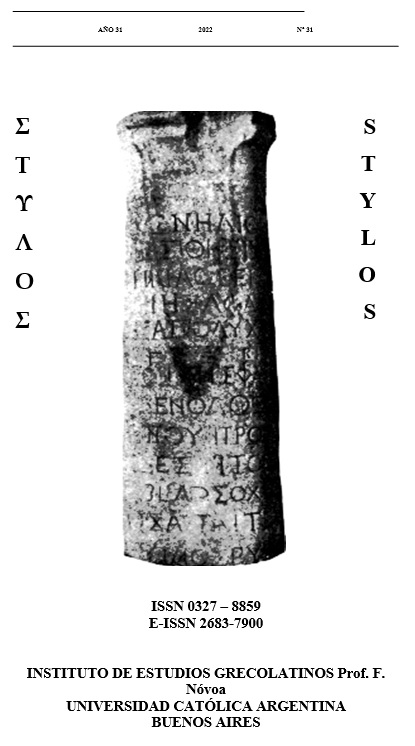EL DISCURSO PERSUASIVO Y LAS ESTRATEGIAS LINGÜÍSTICAS DE CLITEMNESTRA EN AGAMENÓN DE ESQUILO: LA PALABRA COMO ARTIFICIO EN POS DEL PODER
DOI:
https://doi.org/10.46553/sty.31.31.2022.p63-80Keywords:
Agamemnon, Greek Tragedy, Genders, Speech, ClytemnestraAbstract
In this paper we propose to address the persuasive linguistic strategies of Clytemnestra in Aeschylus’ Agamemnon for the execution of her husband’s murder as women’s skills and to analyse the functions of the queen’s language. She covers with a cloak the hatred she carries and shows herself according to the role determined for the woman and wife, publicly. Accordingly, we will analyse from different linguistic perspectives the discourse that the queen constructs. In this sense, Clytemnestra not only appropriates the power that does not concern her according to the male gaze, but also uses persuasion as a vehicle to reach it. Indeed, we consider that the ways to conclude her revenge are different from those used by male figures in the different intra-familial murders that had been taking place until then, since in this sense men produced their crimes without so much qualms and external interference on their role as males, that is, this type of vengeful crime was more associated with them. Clytemnestra’s discourse, then, operates in a double sense: a loving discourse that conforms to the social distribution assigned to women and that generates credibility in the men of the palace.
Downloads
Downloads
Published
How to Cite
Issue
Section
License






